Flight director Tom Uhlig writes about Tim Peake’s recent activity:
You don’t need to have studied aerospace to work in the Flight Control Team. I am a physicist for example and did research in electron-microscopy, looking at the smallest particles at the atomic level. To operate the huge, room-sized million-euro machine needed for our research we undergraduates at the university in Regensburg had to obtain a “driving license” before we were allowed to take nice photos of silicon atoms. To operate the microscope at its limits is not easy: the electromagnetic lenses must be perfectly adjusted, the sample must be well-prepared, placed in a good vacuum with a stable temperature (liquid nitrogen ensured a stable cold) and most of all: any vibrations must be eliminated. Our microscope was mounted on a concrete foundation several tons in weight in the basement of our university – separate from the rest of the building. Even an enthusiastic student running up stairs somewhere in the building could ruin a ‘photo shoot’ and the research. Some labs such as our colleagues in Dresden do electron holography microscopy in the middle of forests so city-vibrations don’t get in the way. Of course, absolute silence in a room is needed – an electron is a highly sensitive microphone, but in a negative way…
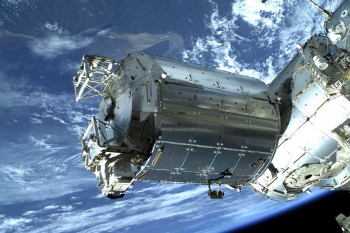
Columbus laboratory seen from the outside during ESA astronaut Luca Parmitano’s spacewalk in 2013. Credits: ESA/NASA
Gravity vibrations
Who would have thought that the Space Station drifting weightlessly around Earth, has similar problems? Space research specifically uses the term ‘microgravity’ for Space Station research, not ‘weightlessness’, as there is gravity just several orders of magnitude less than on Earth. Gravity still acts at the altitude of the Space Station – but the Station is flying at a speed that the centrifugal force compensates for it. Strictly speaking this compensation only applies at the exact centre of gravity so small uncompensated forces occur in the huge structure the further away from the centrifugal epicentre.
Other effects occur as the Station decelerates due to atmospheric drag. And then there are vibrations. The Space Station is a highly complex machine, inside pumps pump, fans rotate, humans work and robots move. All these mechanical moments lead to vibrations in a variety of frequencies – and their effect grows with increasing distance from the centre of mass of the station.
In the European Space Agency’s Columbus space laboratory, therefore, we arrange the experiment cabinets by sensitivity to “micro-g environment disturbance”. Everything that is very sensitive, is located near the entrance hatch – closest to the Space Station’s centre of mass. Here we examine liquids in microgravity and grow crystals. On the opposite side of Columbus, we do the less sensitive research: here we have the racks for human physiology – vibrations don’t have a major influence on the metabolic processes in human bodies, for example.
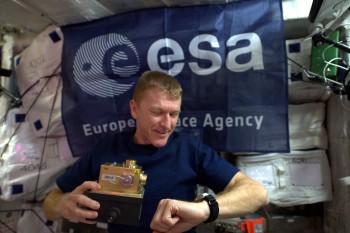
Tim posted this image with the caption: “I like an accurate watch – this sensor will help our atomic clock be accurate to 1 second in 300 million years… now that’s precise.” Credits: ESA/NASA
Getting ready for atomic clock ensembles
In the future we will install a delicate experiment on the less favorable side of Columbus’ exterior, the Atomic Clock Ensemble in Space (ACES). ACES will test highly-accurate atomic clocks in space and refine Einstein’s theories.
Before we fly the experiment we want to get the most accurate values on microgravity conditions, therefore we added some preparatory activities to Tim Peake’s schedule: First we had Tim Peake rearrange some items in Columbus, to access the end cone region. Then he took one of the Space Acceleration Measurements System (SAMS) sensors from the Japanese Kibo module and fixed it to the end of the Columbus laboratory. This sensor system allows us to measure accelerations, forces and vibrations and will provide us with valuable information in the next weeks. Our team followed Tim’s work on the camera – thanks to the good preparation, the Brit could do his job without complications and questions.
The measurements will begin soon and pave the way for Columbus to tick to the sound of very precise clockwork. Time is of the essence …

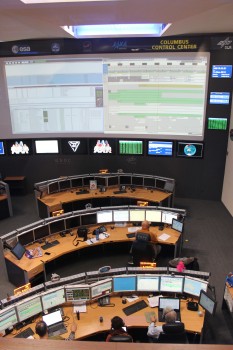
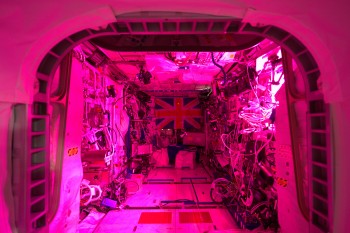
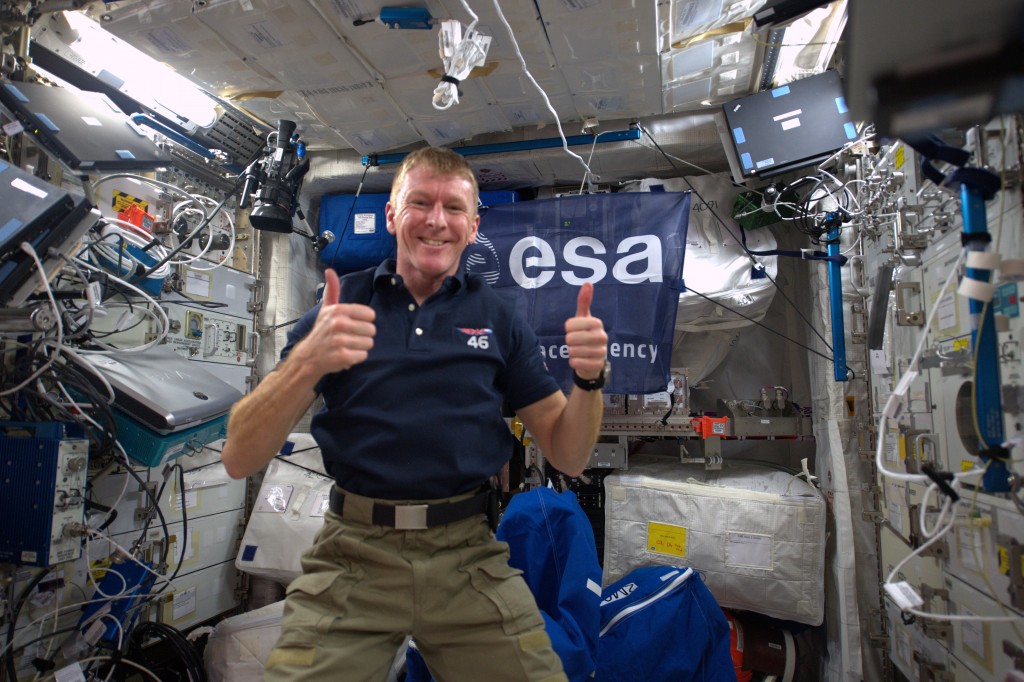
Discussion: one comment
Fascinating insight. Thanks!